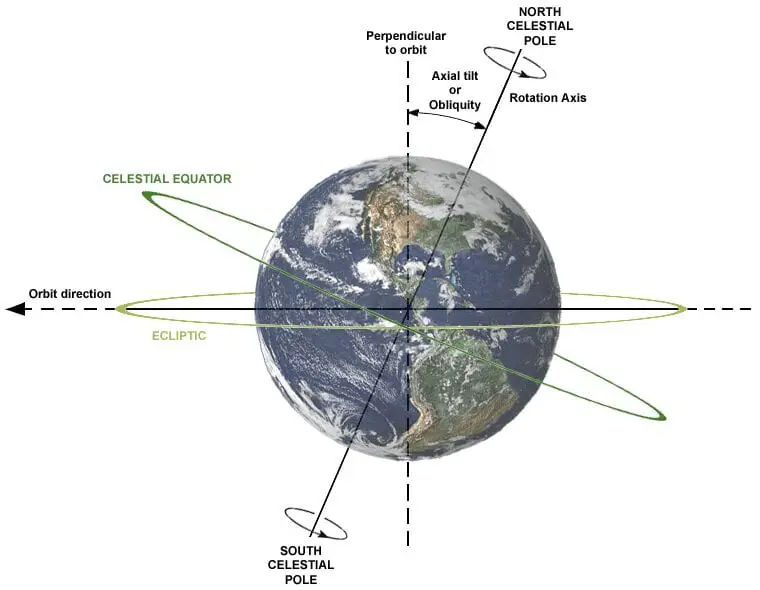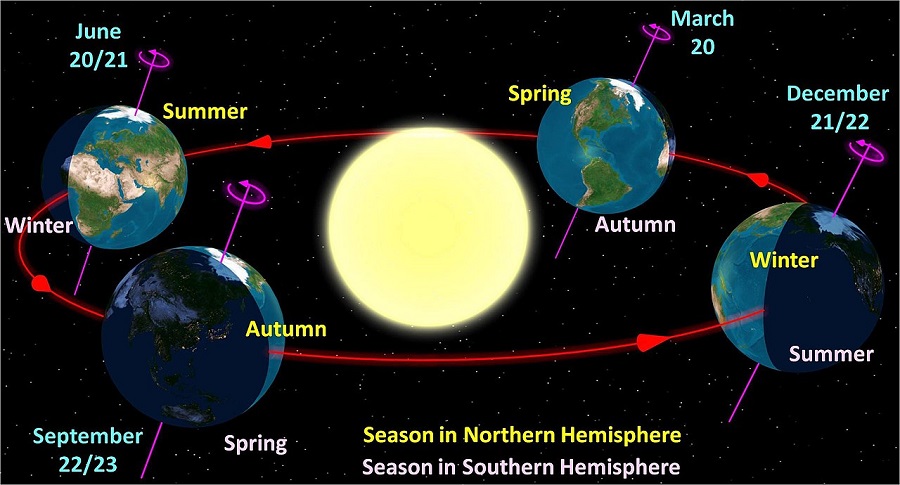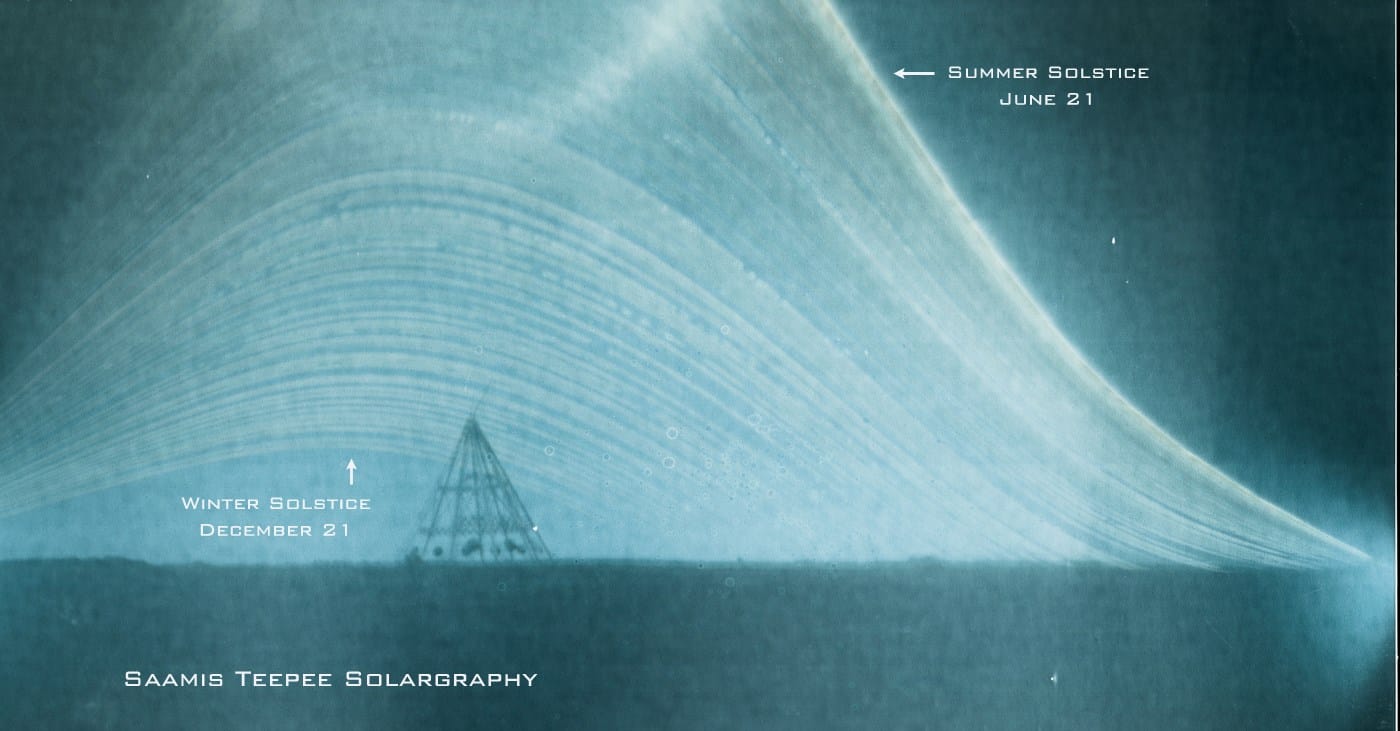June Solstice marks the arrival of the first day of winter in southern hemisphere. That’s why in earth’s southern areas, let’s say of Australian people, it is known as Hibernal or Winter Solstice.
In 2023, first day of winter solstice in Australia (southern hemisphere) will occur on Thursday, June 22, at 00:58 (AEST) Australian Eastern Standard Time. Not to mention, this astronomical event will also be the darkest as well as the shortest day of the year in the southern hemisphere.
On the other hand, for the people living in the northern hemisphere, this event marks the arrival of the first day of summer. That’s why in the earth’s northern areas, the June solstice is known as Summer Solstice or Estival Solstice.
In addition, this astronomical event will also be the brightest as well as the longest day of the year in the northern hemisphere. To summarize, the meaning of Solstice changes depending on the fact that at which side of the hemisphere you live upon.
What is Solstice?
There are two ways to define the meaning of solstice. These are meteorological and astronomical definitions of Solstice. According to its astronomical definition, this is a natural event during which one of the hemispheres is at the maximum tilt away from or toward the sun.
And, when this happens, the sun appears to stand still and reverses its direction. In layman, Solstice is a day that occurs due to the sun’s changing path.
Highly Recommended: Equinox vs Solstice – What’s the Difference?
Thanks to Earth’s Tilt, We See Solstices

Just because the earth has an axial tilt of 23.4 degrees, there is a mismatch between the southern and northern hemispheres. In fact, not only do we see solstices because of the earth’s tilt. We see equinoxes too.
| Basis of Comparision | Southern Hemisphere | Northern Hemisphere |
| March Equinox | In the southern hemisphere, it marks the first day of fall, therefore, Fall or Autumn Equinox. | In the northern hemisphere, it marks the first day of spring, therefore, Spring or Vernal Equinox. |
| June Solstice | It marks the first day of winter, therefore, Winter Solstice. | It marks the first day of summer, therefore, Summer Solstice. |
| September Equinox | Marks the first day of spring, therefore, Spring Equinox. | Marks the first day of fall, therefore, Fall Equinox. |
| December Solstice | It marks the first day of summer, therefore, Summer Solstice. | It marks the first day of winter, therefore, Winter Solstice. |
June Solstice: First Day of Winter in the Southern Hemisphere

As you already know that a solstice is a natural event during which one of the hemispheres is at the maximum tilt away from or towards the sun. Moreover, you also know that there are two types of Solstices.
These are June Solstice and December Solstice. So, how to define which one is which…!!! OKAY, let me rephrase my question for you!!! What’s the difference between June and December solstice? ANY GUESS?
The only difference between them is that during June solstice, the north pole of the earth is at its maximum tilt towards the sun. That’s why the June solstice is also known as the Northern Solstice.
On the other hand, during the December solstice, the south pole is at its maximum tilt toward the sun. That’s why the December solstice is also known as the southern solstice.
June Solstice – Northern Solstice
During June solstice, the north pole of the earth is at its maximum tilt towards the sun, therefore, half of the earth’s surface (northern hemisphere) receives maximum sunlight, marking the brightest and the longest day of the year in the northern hemisphere.
That’s why the June solstice aka northern solstice is officially known as the summer solstice in the northern hemisphere.

Similarly, just because the north pole of the earth is at its maximum tilt towards the sun, as a result, the south pole of the earth is at its maximum tilt away from the sun. Therefore, half of the earth’s surface (southern hemisphere) receives minimum sunlight.
Hence, marking the darkest and the shortest day of the year in the southern hemisphere. That’s why the June solstice aka the northern solstice is officially known as the winter solstice in the southern hemisphere.
Additionally, during June Solstice in southern hemisphere, not only the sun’s orbital path across the sky is as low as it can be. The sun will also enter the tropic of cancer on the eve of the June solstice.
And with that, days get longer after the winter solstice. That’s why the winter solstice in the southern hemisphere is also known as the midwinter.
Editor’s Choice: Seasons in Southern Hemisphere & its Bizarre Consequences
Winter Solstice – First Day of Winter or Midwinter?
Now is the time that we should talk about the meteorological definition of the winter solstice. Well, technically speaking, if we go by the meteorological definition, it marks the end of half of the winter or winter season i.e mid-winter.
However, on the other hand, if we go by the astronomical definition, it marks the arrival of the first day of winter. Therefore, the question arises that why we have two different definitions for a single event. More importantly, which one of these is the correct one? Let’s find out.
Let’s Go Back in Time
Before the arrival of the scientific revolution, humans didn’t know how to calculate the change in the season in terms of astronomical calculations. WHY? Because they didn’t have the telescope to do such nasty observations.
Therefore, what they used to do is to calculate the change in season as humanly as possible. With time, early humans understood that the sun seems to cross over the horizon after a fixed interval of time. Additionally, they also understood the pattern of the annual temperature cycle.
In other words, what early humans used to do is to calculate the relative things, like what they felt and observed with the naked eye, which is in fact in the modern notation known as the meteorological definition of winter solstice or simply meteorological winter.
On the other hand, what our astronomers and scientists calculate with their super-sophisticated technology is defined as the astronomical definition of winter solstice or simply astronomical winter.
Therefore, to conclude, I would say that both definitions are correct in their own sense. Hence, as a result, some people define winter solstice in the southern hemisphere as the first day of winter.
On the contrary, some people define it as the end of half of the winter or winter season. Hence mid-winter. Not to mention, the meteorological seasons always arrive approx 20 days before the arrival of astronomical seasons. To understand it more clearly, refer to the below table.
Meteorological vs Astronomical Seasons
| Seasons | Meteorological Season Dates | Astronomical Season Dates |
| Autumn Equinox | Wednesday, 1 March 2023 | Tuesday, 21 March 2023 |
| Winter Solstice | Thursday, 1 June 2023 | Thursday, 22 June 2023 |
| Spring Equinox | Friday, 1 September 2023 | Saturday, 23 September 2023 |
| Summer Solstice | Friday, 1 December 2023 | Friday, 22 December 2023 |
How Long is the Shortest Day of the Year in the Southern Hemisphere?
How long is the shortest day of the year in the southern hemisphere simply depends on the fact of how close you are residing to the south pole. In other words, the closer you reside to the south of the antarctic circle towards the south pole, the thinnest hours of daylight you will receive.

According to the data released by the Finnish Meteorological Institute, during the 2016 June solstice, Ushuaia i.e the southernmost city of Argentina received 7 hours and 12 minutes of daylight. Capetown received 9 hours and 53 minutes of daylight. And, Dunedin i.e second-largest city on the South Island of New Zealand received 8 hours and 39 minutes of daylight during the June solstice.
If we talk about the whole of the southern hemisphere as one, the shortest day of the year in the southern hemisphere received an average of 9 hours of daylight. Don’t forget, the closer you are to the south pole, the thinnest hours of daylight you will receive.
What is the First Day of Winter in the Southern Hemisphere?
In 2023, Winter Solstice in Australia (southern hemisphere) will occur on Thursday, June 22, at sharp 00:58 Australian Eastern Standard Time (AEST).
Well, not just the shortest, it will also be the darkest as well as the longest night of the year in the earth’s southern hemisphere. Not to mention, this astronomical event will occur at the same moment for all of us.
In other words, whether you are living in London (i.e in the northern hemisphere), or in Australia (i.e in the southern hemisphere), it would be a moment of joy for all of us at the same instant.
Why does the winter solstice date vary?
Yes, the date of the solstice does vary. Well, it’s not rocket science to understand, just some basic physics. See, after every four years, there is a leap year. Therefore, in order to adjust the Gregorian Calendar with the eve of the winter solstice in the southern hemisphere, the June solstice date varies.
For example, in 2020, the June solstice occurred on the 20th of the month. But this year i.e 2023, it will occur on the 22nd of the month. Not to mention, there are some other factors too, that contribute to the variation in the dates of the Winter solstice. But, just to make things simple, I am just neglecting them.
Editor’s Choice: Seasons in Northern Hemisphere & its Bizarre Consequences
That’s it for this post. If you like this article, share it if you like, like it if you share it. You can also find us on Mix, Twitter, Pinterest, and Facebook. Hey man, If you have come this far, do give us feedback in the comment section. It would make my day. You can also make a donation. Your donations will help us to run our website and serve you BETTER. Cheers!!!
You might also like:
- March Equinox 2023 – First Day of Spring in Northern Hemisphere
- March Equinox 2023 – First Day of Fall in Southern Hemisphere
- September Equinox 2023 – First Day of Fall in Northern Hemisphere
- September Equinox 2023 – First Day of Spring in Southern Hemisphere
- December Solstice 2023 – First Day of Winter in Northern Hemisphere
- December Solstice 2023 – First Day of Summer in Southern Hemisphere
Nice article but you made an error in the 2nd paragraph.
You stated, ‘the June solstice i.e winter solstice in the southern hemisphere will occur on Monday, June 21, at sharp 14:32 Australian Eastern Daylight Time (AEDT)’
AEDT is NOT running at this time of year, we are on EST (Eastern Standard Time) in June right up to the official Aust Start of AEDT which is between 1st Sunday in October till the 1st Sunday in April. cheers………
Hello Philip,
Thank you so much for your feedback. I just rechecked what you have mentioned. As per your pro feedback, I have corrected my mistake. Once again thank you so much much. Keep visiting us!!!! Cheers…!!!
Actually the first day of winter in the Southern Hemisphere is the 1st of June not on the winter solstice.
Well, yeah, meteorologically, you are correct. The first day of winter in the southern hemisphere is the 1st of June. However, astronomically, in the southern hemisphere, winter season begins on the eve of winter solstice…!!!
I learned a lot from your article. Thank you. I wish you much success in your future endeavours!
Thanx Reine, Thank you so much for your warm words. Keep visiting us…!!!
I already knew about it all. But the way you explained in terms of Science n all, you nailed it, bro. Keep doing good work,
Thnx. Keep visiting us…!!!
Hi
Australia classes THE FIRST OF JUNE as the FIRST DAY of WINTER….. just giving you a courtesy correction
Hey Christine,
Thank you for your feedback. As per astronomical seasonal classifications, winter does start on the June solstice. However, if I talk about the meteorological seasonal classifications, it starts on the first day of the month of June. I hope it will clear your query. Cheers!!! Keep visiting us…!!!